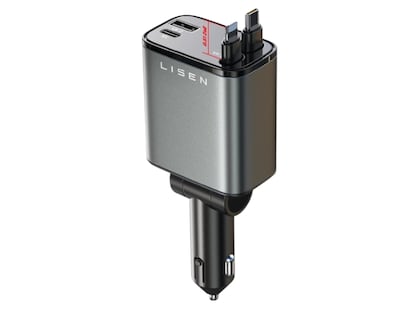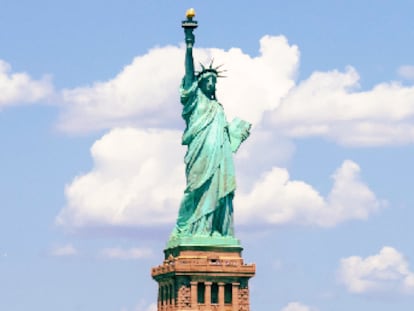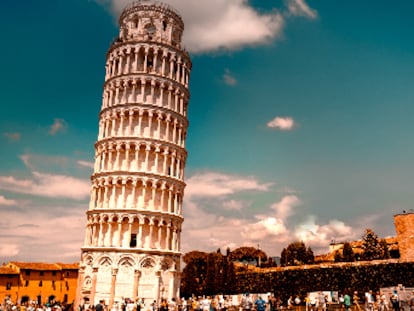Cable sobre la compra de material militar a Pekín por parte de Perú
El 15 de diciembre de 2009 el embajador estadounidense en Lima se muestra sorprendido por el anuncio de Alan García, abanderado de una iniciativa regional de paz y desarme, de la compra de entre 80 y 120 tanques chinos. El embajador cree que se debe a las presiones internas ante lo que se percibe como provocaciones por parte de Chile.
| ID: | 240050 |
| Date: | 2009-12-15 23:08:00 |
| Origin: | 09LIMA1699 |
| Source: | Embassy Lima |
| Classification: | CONFIDENTIAL//NOFORN |
| Dunno: | 09LIMA1635 09LIMA1647 09LIMA1653 |
| Destination: | VZCZCXYZ0000 OO RUEHWEB DE RUEHPE #1699/01 3492308 ZNY CCCCC ZZH O R 152308Z DEC 09 FM AMEMBASSY LIMA TO RHMFISS/CDR USSOUTHCOM MIAMI FL IMMEDIATE RUEHC/SECSTATE WASHDC IMMEDIATE 0264 INFO RHEHAAA/NATIONAL SECURITY COUNCIL WASHINGTON DC RUEHAC/AMEMBASSY ASUNCION RUEHBJ/AMEMBASSY BEIJING 0001 RUEHBO/AMEMBASSY BOGOTA RUEHBR/AMEMBASSY BRASILIA RUEHBU/AMEMBASSY BUENOS AIRES RUEHCV/AMEMBASSY CARACAS RUEHGE/AMEMBASSY GEORGETOWN RUEHLP/AMEMBASSY LA PAZ RUEHMN/AMEMBASSY MONTEVIDEO RUEHPE/AMEMBASSY LIMA RUEHQT/AMEMBASSY QUITO RUEHSG/AMEMBASSY SANTIAGO RUEKJCS/SECDEF WASHINGTON DC |
C O N F I D E N T I A L LIMA 001699 SIPDIS NOFORN NSC FOR DRESTREPO E.O. 12958: DECL: 2019/12/15 TAGS: PREL, MOPS, PARM, PTER, SNAR, PBTS, CI, PE SUBJECT: PERU: CHINESE TANKS, PEACE PROPOSALS AND U.S. MILITARY SUPPORT REF: LIMA 1653; LIMA 1647; LIMA 1635 CLASSIFIED BY: P.Michael McKinley, Ambassador, State, Executive; REASON: 1.4(A), (B), (D) 1. (C/NF) Summary: Peru is reportedly poised to purchase Chinese tanks with an eye towards replacing its aging tank fleet and building up its "dissuasive" defense posture, and to buy aircraft from Brazil as well as MANPADS and anti-tank weapons from other countries. These defense acquisitions are surprising, in light of President Garcia's high profile regional "Peace and Disarmament Initiative." Neither were they discussed during the wide-ranging strategic dialogue in Lima with USSOUTHCOM's Commander December 1-3. While President Garcia and Defense Minister Rey have defended the purchases and criticized skeptics, most observers believe the prospective tank purchases respond to domestic political pressures fueled by the perceived provocations of Chile. There may be an element of impetuous anti-Chile pantomime in this announcement, since Peru has rarely brought big purchases to completion in the last fifteen years. Whatever the case, should these acquisitions actually materialize, it would suggest that the GOP will tilt toward those willing to play, including China and Brazil, which could complicate keeping Peru's focus (and resources) on the critical internal threat. In the meantime, the Foreign and Defense Ministers have assured the Ambassador that the arms purchases will not distract Peru from improving its capabilities to deal with the Shining Path (SL) and drug traffickers. End Summary. What Types of Weapons Does Peru Need? 2. (C) Five Chinese-made "Al-Khalid" model (Type 98 MBT 2000) tanks appeared on display during a military parade in Lima on December 8. The advanced tanks are reportedly on loan for testing by the Chinese company Norinco. Media reports claim that the GOP has decided to purchase between 80 and 120 tanks at a price tag of $5-6 million each (other sources say $9 million), to eventually replace the roughly 140 aging T-55 tanks it bought from the USSR back in the 1960s and 1970s. The deal was reportedly struck between President Garcia and the PRC's President Hu Jintao during the last APEC summit in Singapore. 3. (C) Administration officials, including MOD Rey and FM Garcia Belaunde, were quick to explain that Peru is simply modernizing basic military equipment that has become obsolete due to the lack of maintenance, a task they say was neglected by previous administrations. Government officials have stressed that Peru needs to maintain its "deterrence" capacity and that the Comptroller General's Office would be charged with overseeing the acquisition process. Meanwhile, news of the Chinese tank purchases caused sharp reactions among the political opposition, including Nationalist party leader Ollanta Humala, who termed the decision "hasty." Most of the opposition's commentary centered on whether the Chinese tanks were a match for Chile's Leopard tanks (or if kick-backs could be involved in the deal) , but few questioned if tanks and armor have practical military value in Peru (a country of mostly jungle and mountains) when it shares only a small 124 km border with Chile and little flat border with Ecuador. Other Weapon Systems 4. (C) There have also been reports that Peru is interested in buying a dozen Super Tucano A-29 close-combat support aircraft from Brazil, with a cost of around $9 million each. Details of the deal were reportedly discussed during the December 10-11visit to Lima of Brazilian President Lula da Silva, who traveled with a large commercial delegation in tow (septel). The press quoted MOD Rey as making an "urgent" request to his Brazilian counterpart Nelson Jobim for an immediate delivery of three or four Super Tucanos for use in the VRAE. (Jobim said this was up to the aircrafts' manufacturer, Embraer.) Nonetheless, most knowledgeable observers believe that the A-29s are well suited for counter narco-terrorism operations. We have also heard reports that Peru is considering purchasing more MANPADS from Russia and anti-tank weapons from Israel, but we do not know the costs or amounts. Surprise? 5. (C) These defense acquisitions come as something of a surprise, in light of President Garcia's intensively pursued regional "Peace and Security Cooperation" initiative. Intended to reduce military expenditures, formalize a non-aggression pact and field a South American defense force, the GOP has actively promoted the initiative at various international fora, including UNASUR, UNGA, APEC, the Iberoamerican Summit, the OAS and the Vatican. That the flurry of Peru's high-profile peace-initiative diplomacy was punctuated by a domestic defense acquisitions announcement of this size has caught the government in a kind of double bind. But government officials have sought to deflect the apparent contradiction. 6. (C/NF) The planned arms purchases were also notable for their absence during the wide-ranging strategic pol/mil dialogue in Lima between USSOUTHCOM Commander General Douglas Fraser and his Peruvian counterparts December 1-3. To the extent that arms acquisitions were discussed, the Peruvians complained about the slow and complicated U.S. defense procurement process (FMS and FMF) and high price tags for U.S. equipment such as helicopters. After agreeing with their U.S. counterparts regarding the primacy of the internal threat arising from drug trafficking and terrorism, the Peruvians also told General Fraser that their main external threat emanated from Bolivia, where they see Evo Morales as consolidating power, eliminating political rivals and seeking to extend his radical brand of indigenous populism beyond his borders, with ALBA's help. 7. (C/NF) President Garcia and Defense Minister Rey have defended the Chinese tank purchases as reflecting Peru's political interests and legitimate self-defense needs. In response to criticism, Garcia accused the local press of being "anti-patriotic" for divulging supposedly classified details about the tank deal. Most observers believe the prospective tank purchases respond to domestic political pressures fueled by the perceived provocations of Chile, including the "Salitre 2009" exercise, the announcement of its $665 million weapons deal with the U.S., and the recent spy scandal (refs) involving a Peruvian Air Force NCO selling security secrets to Chile. Several Peruvian interlocutors also told USSOUTHCOM's General Fraser they were concerned that Chile would not abide by a prospective decision by the International Court of Justice (ICJ) at The Hague favoring Peru's argument that the maritime boundary be redrawn. For that reason, they said, Peru would need to be prepared to deploy a minimum level of dissuasive military force in order to compel Chilean compliance with the ICJ decision. Comment: The Real Reason is... 8. (C/NF) The real reasons for the announced purchases, particularly of the Chinese tanks, are surely many and clouded with questions. There is speculation that corruption has played a role, although the low unit price suggests the Chinese are buying their way into the market. If the entire package goes through, the cost would exceed Peru's entire $650 million "Basic Nucleus" strategic defense modernization plan - a disproportionately large "off-line" budget item. In that sense, these planned acquisitions suggest that, in pursuing defense expenditures, the GOP will tilt toward those willing to play the game a certain way; i.e., selling the Peruvians what they say they want rather than what they are perceived to need. At the end of the day, President Garcia could also be reacting to Chile with an impetuous decision. 9. (C/NF) Comment Continued: In our view, the utility of tanks in any real military scenario - including against Chile, whose air, ground and sea power is vastly superior to Peru's - is open to question. There appears to be better, and cheaper ways to address the prospective external threat, including air and sea missile defense systems and anti-tank weapons. At the same time, Peru is not yet making sufficient progress against its primary internal threat of drug trafficking and resurgent Shining Path (SL) terrorism in the VRAE. Moreover, the GOP has yet to commit the $150 million needed for the VRAE campaign. While the Brazilian Tucanos might make practical sense in the VRAE, the Chinese tanks manifestly do not. Should the tank deal go through, it could undermine our efforts to keep Peru focused on the primary (internal) threats to its security. The Ambassador raised this concern on December 14 and 15 with FM Garcia Belaunde and MOD Rey, and was assured that Peru remains committed to addressing SL in the VRAE, drug trafficking and related violence. Time will tell. End Comment. MCKINLEY |
Traducción automática. Puede que el texto traducido no sea fiel al original
Tu suscripción se está usando en otro dispositivo
¿Quieres añadir otro usuario a tu suscripción?
Si continúas leyendo en este dispositivo, no se podrá leer en el otro.
FlechaTu suscripción se está usando en otro dispositivo y solo puedes acceder a EL PAÍS desde un dispositivo a la vez.
Si quieres compartir tu cuenta, cambia tu suscripción a la modalidad Premium, así podrás añadir otro usuario. Cada uno accederá con su propia cuenta de email, lo que os permitirá personalizar vuestra experiencia en EL PAÍS.
¿Tienes una suscripción de empresa? Accede aquí para contratar más cuentas.
En el caso de no saber quién está usando tu cuenta, te recomendamos cambiar tu contraseña aquí.
Si decides continuar compartiendo tu cuenta, este mensaje se mostrará en tu dispositivo y en el de la otra persona que está usando tu cuenta de forma indefinida, afectando a tu experiencia de lectura. Puedes consultar aquí los términos y condiciones de la suscripción digital.




























































